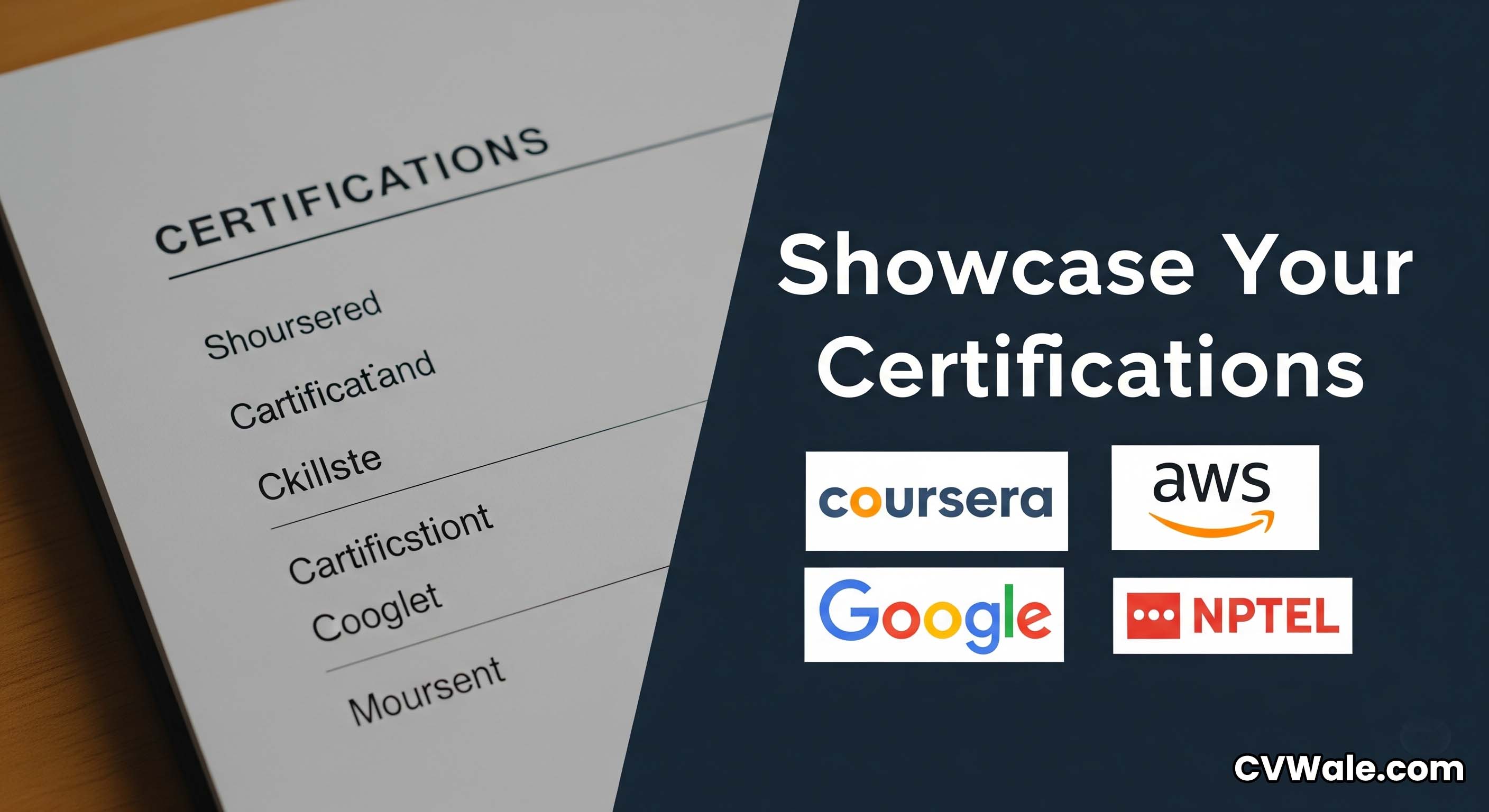How to List Certifications on Your CV in 2025 (with Examples)

In today's dynamic job market, a university degree is often just the starting point. Continuous learning is no longer a buzzword; it's a necessity for career survival and growth. With the rise of credible online learning platforms like Coursera, Udemy, NPTEL, LinkedIn Learning, and upGrad, acquiring new skills and certifications has become more accessible than ever for professionals and students in India. These certifications are powerful assets that can significantly boost your profile, but their impact is lost if they aren't presented correctly on your CV. Simply listing them without proper context or format can make your resume look cluttered and unprofessional. This guide will provide you with a clear, step-by-step approach on exactly how, where, and which certifications to list on your CV to impress recruiters and validate your expertise in 2025.
Why You Should Absolutely Include Certifications on Your CV
Before we get into the "how," let's quickly understand the "why." A well-placed certification section:
- Demonstrates Initiative: It shows recruiters that you are a proactive learner, committed to your professional development beyond your formal education.
- Fills Skill Gaps: Certifications are an excellent way to prove you have specific, practical skills that may not have been covered in your degree program. This is especially crucial for career changers.
- Adds Credibility and Validation: A certification from a reputable organization (like Google, Microsoft, Amazon, PMI, or a top university via edX) acts as a third-party endorsement of your skills.
- Boosts ATS Keywords: Many certifications have names that are also important industry keywords (e.g., "Certified ScrumMaster," "Google Ads Certified"). Including them increases your chances of passing through Applicant Tracking Systems (ATS).
Where to Place the Certifications Section on Your CV
The placement of your certifications section depends on your level of experience and the relevance of the certifications to the job you're applying for.
- For Freshers or Career Changers: If you are a recent graduate or changing fields, your certifications are highly important. Place them in a prominent position, typically right after your "Education" section. This highlights your relevant, newly acquired skills.
- For Experienced Professionals: If you have a solid work history, your experience section should take center stage. In this case, place the "Certifications" section after your "Work Experience."
- In the Professional Summary: If a specific certification is a mandatory requirement for the job (e.g., a PMP certification for a Project Manager role), it's a smart move to mention it directly in your professional summary at the top of your CV.

The Best Format for Listing Your Certifications
Clarity and consistency are key. For each certification, provide the following information in a clean, easy-to-read format:
- Name of the Certification (in bold)
- Name of the Issuing Organization or Platform
- Date of Completion (Month and Year are usually sufficient)
- [Optional but Recommended] A credential ID or URL for verification, if available.
Sample Formats:
Example 1: Technical Certification
AWS Certified Solutions Architect – Associate
Amazon Web Services
Issued: June 2025
Example 2: Marketing Certification
Google Ads Search Certification
Google
Issued: May 2025 (Expires: May 2026)
Example 3: University Course on a Platform
Data Science Professional Certificate
IBM (via Coursera)
Completed: April 2025
Example 4: Indian Platform Certification
Programming, Data Structures and Algorithms Using Python
NPTEL (IIT Madras)
Completed: March 2025
Which Certifications Should You Include?
The golden rule is relevance. Your CV is not a collection of everything you've ever done; it's a targeted document.
- Definitely Include: All certifications that are directly relevant to the job and industry you are applying for.
- Maybe Include: Certifications that demonstrate valuable transferable skills. For example, a "Project Management Fundamentals" course is valuable for many roles, not just project managers.
- Probably Exclude: Hobby-related courses (unless the hobby is directly relevant, like a photography course for a social media role), very basic skill courses (e.g., "Introduction to Microsoft Word"), or certifications that are very old and based on outdated technology.
How to List "In Progress" Certifications
What if you are currently pursuing a certification but haven't finished it yet? You can and should still list it! This shows recruiters your commitment and what new skills you will soon possess. The key is to be transparent.
Format for In-Progress Certifications:
Certified Associate in Project Management (CAPM)
Project Management Institute (PMI)
Expected Completion: December 2025
By strategically listing your certifications, you provide concrete evidence of your skills and dedication. It's a simple but powerful way to enhance your credibility. Using a flexible tool like CVWale allows you to easily add, remove, or reorder a dedicated "Certifications" section, ensuring your CV is always perfectly tailored and professional.
